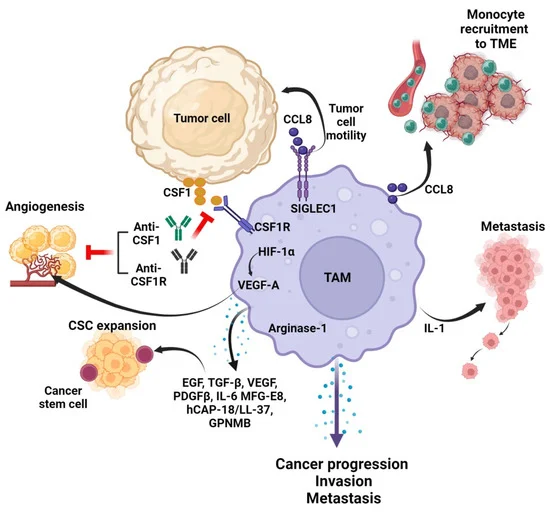Rising Cancer Rates Highlight Urgent Need for Targeted Macrophage Therapy in Leukemia Treatment
October 12, 2024
In 2022, the world saw around 20 million new cancer cases and 10 million cancer-related deaths, with projections suggesting that by 2050, this number could rise to 35 million new cases, underscoring the urgent need for enhanced cancer research and treatment strategies.
The tumor microenvironment (TME) plays a critical role in cancer behavior and immune response, particularly through tumor-associated macrophages (TAMs), which are known to promote tumor growth and metastasis.
Among these, leukemia-associated macrophages (LAMs) are particularly significant as they support tumor growth and are associated with poor prognosis in acute myeloid leukemia (AML).
AML is characterized as a heterogeneous cancer with limited treatment efficacy and notable resistance to therapies, making the role of the TME and macrophages even more crucial.
Macrophages within the bone marrow microenvironment influence the development and progression of leukemia, highlighting their plasticity and polarization as key factors.
Current research indicates that targeting macrophages could enhance the effectiveness of existing AML treatments, with drugs like pexidartinib, magrolimab, and bexmarilimab currently under investigation in clinical trials.
Recent findings suggest that therapies aimed at reducing anti-inflammatory macrophages while promoting pro-inflammatory ones could be beneficial in treating AML.
The dysregulation of the PI3K-AKT-mTOR signaling pathway in AML presents potential therapeutic targets, particularly in relation to macrophage polarization.
Macrophages can polarize into pro-inflammatory (M1) and anti-inflammatory (M2) subtypes, with M2 macrophages often promoting tumor progression and immune evasion.
In the TME, macrophage polarization is influenced by various signaling pathways and cytokines, with M2-like TAMs primarily associated with immunosuppressive functions.
Understanding the complex interactions between TAMs and tumor cells is essential for developing more effective cancer therapies that aim to manipulate the TME to inhibit tumor progression.
The review emphasizes the importance of LAMs as therapeutic targets due to their role in therapy resistance, highlighting the need for strategies to modulate macrophage activity.
Summary based on 2 sources
